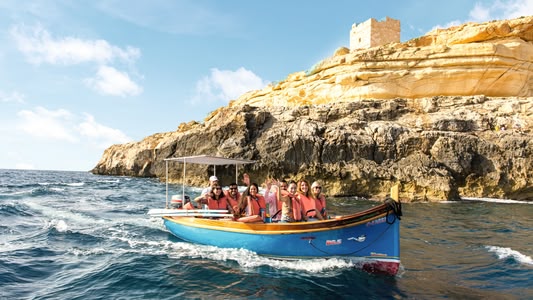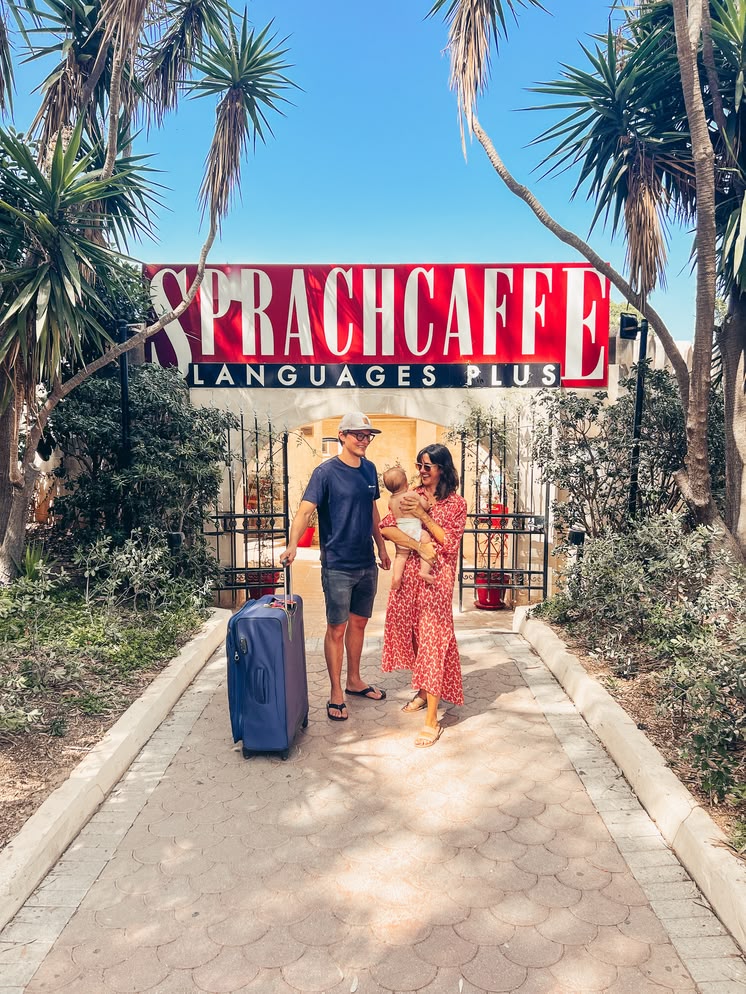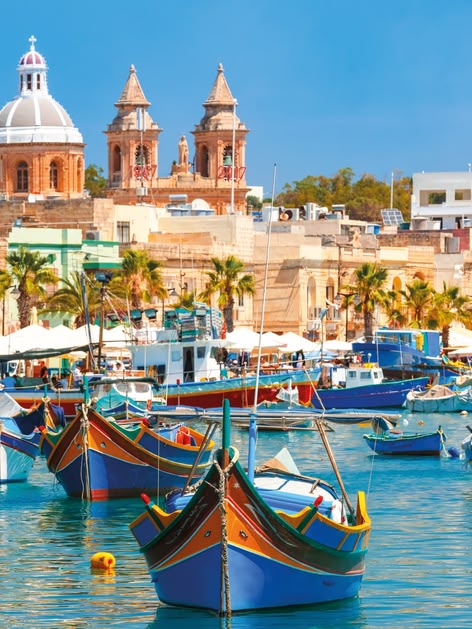Getting Around Malta: Transportation Guide, Travel Costs & Public Transport Tips
Getting around Malta from the Airport
To reach the island of Malta, you'll most likely need a flight . Once you land, the plane will drop you off at Malta International Airport, located in the heart of the island in a town called Luqa. From there, you'll most likely need to travel to the capital, Valletta, but how do you get from the airport to the center of Malta?
The distance to cover isn't long: Luqa is only 9 kilometers from Valletta . To get there, you have several options to choose from:
- Taxi : Of course, there will be plenty of taxis outside the airport ready to take you to the capital, so you won't even have to wait. The trip will take about 15 minutes and costs between €17 and €20 on average.
- Bus : This option is also available, and is significantly cheaper, with a bus ticket costing an average of €2. From here, you can take the X4 line to Valletta, as well as the X1 line to Mellieha, the X2 line to Saint Julian's, the X19 line to Marsaxlokk, and the X3 line to Bugibba.
- Private transfer : Several companies offer the option of booking a private transfer by car or shuttle in advance, so you can secure your trip even at inconvenient times or at night. Sprachcaffe offers an optional transfer service for language courses for teenagers in Malta. .
What if you arrive to Malta by Ship?
While most people choose to arrive by plane, some prefer to take a boat or ferry. However, figuring out how to get around Malta if you choose to arrive by sea isn't so straightforward: depending on the company you choose, you can dock at different piers on the island, and from there, reaching the city center can be more or less complicated.
- Virtu Ferries is the most convenient company because it docks near Valletta, in Marsa . From there, just cross the road to the bus stop and find a bus to the capital: it's easy, as many lines pass through here.
- Grimaldi Lines disembarks at the Kordin pier , which is a bit more inconvenient. Although Kordin and Marsa Alam are directly opposite each other as the crow flies, if you disembark here you'll actually have to walk all the way around the bay to reach Valletta. To do this, you'll need to go to the Dwieli stop, where you can catch a bus (lines 2, 3, or 4). Be prepared for a steep climb to get to the stop.
- Finally, Ponte Ferries disembarks at Pinto Pier . Not too bad: you're just a short distance from Marsa Pier, so we recommend going to the same stop, where you'll find buses to Valletta.
Naturally, the ferry journey lasts differently depending on the port of departure, and in some cases, it can take many hours: the Genoa-Malta route, for example, takes about 23 hours. However, if you want to bring your car with you to get around Malta more independently, this is the only option.
Please note: Taking your car with you can be a great convenience for getting around Malta, but remember that they drive on the left like in the UK!
Getting around Malta by Public Transport
Let's say you decide to travel without a car: how can you get around Malta by public transport? Is it feasible, or doesn't the country have good transport links?
Given the touristy nature of the island, Malta offers a good public transport service, and although delays or slowdowns may occur during peak seasons, generally relying on public transport is the best option.
However, your options are limited: consider that the island of Malta doesn't have a rail network. In short: there are no trains, only buses and ferries.
By Bus
The bus is the most widely used public transport in Malta, as well as the only one that travels through the streets and connects the various cities and points of interest. Generally speaking, walking is the best way to get around Malta when visiting a single area, so as not to miss a single detail and because the cities, including the capital itself, are small. However, for getting from one area to another, the bus is essential, as the routes are quite long and not walkable.
The entire Maltese archipelago is well connected thanks to over 100 lines (18 of which connect to Gozo). This includes 8 night lines, convenient for getting around Malta between nightclubs or to reach the airport after dark.
The most efficient buses are those labeled TD , or Tallinja Direct . These buses travel a circular route, reaching Malta's main tourist destinations in less time and making far fewer stops. Some of the most popular are:
- TD14, which goes towards Rabat (center)
- TD2 and TD13, which instead go north to Bugibba and Saint Julian's
- TD10 which takes you to Marsaxlokk (south)
A single ticket costs €2 and lasts two hours. A night ticket for the same duration costs €3.
If you plan to use public transport quite frequently, it's a good idea to purchase tourist cards . These passes allow you to save money and travel around Malta by bus more conveniently. There are two options:
- 7-Day Explore Card, which costs €21 and gives you free access to all day and night buses;
- 7-Day Explore Card Plus, which in addition to bus travel, also allows you to take two ferries and use the bike-sharing service twice. It costs €39.
Through Ferry

Valletta Ferries offers several ferries departing from the capital to the Three Cities and Sliema . Schedules vary depending on the season, but there are numerous departures a day, until midnight.
A single ride costs €1.50 during the day and €1.75 at night.
From here, you can also take a trip to the island of Gozo with a specialized company. A ticket will cost around €9, for a journey lasting about 45 minutes.
Bike-sharing
While not strictly speaking a form of public transportation, cycling is a great option if you're looking for a simple and affordable way to get around Malta. Thanks to the bike-sharing service available and widespread across the island, you can enjoy pleasant rides amid breathtaking scenery, all at a reasonable price. There are two different options for renting a bike in Malta:
- With Tallinja Bike, the island's own electric bike service. The first half hour costs €3, after which it costs €2 per half hour. You can also save with the day package if you plan to use it for a longer period (€15) or for three days (€30).
- With Bolt , a service available in numerous cities. In Malta, it offers electric scooters for €0.19 per minute.
Traditional Maltese taxi boats: The iconic Luzzu gondolas
The traditional Maltese luzzu boats are as iconic to the island as its limestone cliffs and azure seas. These small, brightly painted wooden boats - often decorated with the famous "Eye of Osiris" on the bow - were originally used by local fishermen. Today, they serve a new purpose as water taxis, offering short crossings between Valletta and the Three Cities, or scenic rides around the capital's picturesque harbours.
Taking a luzzu ride is a charming and authentic way to experience Malta from the water. The journey is typically short, with fares averaging around €6 per person, depending on the operator and route.
While ferries also connect Valletta with the Three Cities quickly and conveniently, the traditional luzzu offers a more intimate and cultural experience. The boats are still operated by local Maltese boatmen, keeping a long-standing maritime tradition alive.
For a particularly memorable experience, visit the Grand Harbour in the late afternoon - as the sun sets, the colourful luzzu boats create a stunning contrast against the golden light reflecting on the water.
How to get around Malta on foot?

We've already touched on this a little, but it's important to make the point clear: to get around Malta within individual cities, the best way is to use... your feet!
The cities are all relatively small, even the capital itself, and strolling through them is a thrill you can't miss. Furthermore, some places are so full of art, history, and culture that only by exploring on foot can you see everything Malta has to offer.
Mellieha, Bugibba, Sliema, and St. Julian's are all places to explore on foot, strolling through the narrow streets and enjoying the salty scent wafting from the sea. And Valletta, of course: a veritable open-air museum, its historic center has been recognized as a UNESCO World Heritage Site. One of its imposing cathedrals houses two gigantic Caravaggio paintings!
Other points of interest such as the Grand Master's Palace and Fort St. Elmo are close enough to walk to.
Due to its central location compared to other Maltese towns and its small size, Valletta is one of the best places to stay in Malta . Furthermore, buses and ferries depart from here to every other part of the island, as we've seen, and we're less than ten kilometers from the airport. In all respects, this represents the hub of the island of Malta, if not the entire archipelago, and a spot we recommend you linger in, because this city, if given the chance, has the ability to make you fall deeply in love.





